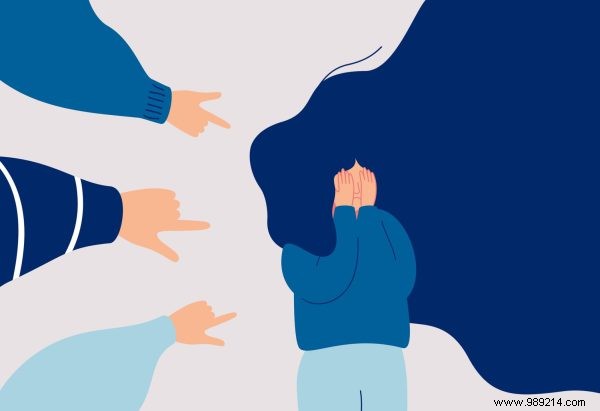
Victim blaming seems awfully easy when you see how often and subtly it happens. In fact, the person who places the responsibility on the victim is often not aware of this. Why?
Victim blaming literally means 'blaming a victim'. It is a common phenomenon in which perpetrators or bystanders consciously or unconsciously blame a victim of, for example, sexual violence for what happened. A 2020 survey shows that 11 percent of Dutch young men (between the ages of 15 and 30) think that if a woman goes out alone at night, she is 'asking' for sexual violence. Three quarters of victims are confronted with at least one accusatory remark.
Subtle
Victim blaming can be obvious, but also very subtle. Half of the Netherlands fell over John de Mol after his performance in BOOS episode This is The Voice. In response to the sexual abuses in The Voice, De Mol emphasized a number of times that the women affected had every opportunity to report, and that they should have done so. There was less talk about a toxic work culture and the role of the perpetrators in it. That went down the wrong way with many people, including his own employees. They had an advertisement placed in the AD with the message 'dear John, it is not the women's fault'. Much to the shock of De Mol, who never intended it that way.
Mistakes of thinking
Why is it so hard to let a victim be a victim without a buts? Victim blaming is based on a number of universal fallacies, which in psychology include cognitive biases. are called. The tendency of people to assign causes to their actions and behaviors, for example. Finding that a victim 'asks' for violence through his or her 'sexy' clothing is a typical example of this.
Another fallacy is the hindsight bias , the mistaken idea that you could have foreseen and prevented a situation. That can sound like 'who goes home with a man just like that?'.
Then there is the human thought that the world is a fair and good place, in psychology the just-world called hypothesis. This is actually nothing less than the very simple 'bean comes for its wages'. We find it biologically difficult to accept that bad things just happen and try to find an explanation for this in the behavior of the victim. Victim blaming then becomes a kind of protection mechanism; a way to feel in control with the idea 'this won't happen to me'.
Self-blaming
The psychological principles of victim blaming apply just as much to the victim themselves, which means that they do not always sound the alarm. In BOOS, for example, victims indicate that they blamed themselves because they had voluntarily gone with a man or had not defended themselves.
Cognitive biases Errors, or fallacies, cause you to judge a situation irrationally. You think you are objective, but in practice that is often not the case. This negatively affects the decisions you make. In the case of victim blaming, misconceptions are also harmful to the victim. To prevent your thinking mistakes from hurting someone else, you can follow these tips:
Sexual Abuse Helpline:0900-999 90 01.
More information about reporting sexual violence.
By:Emma Verweij